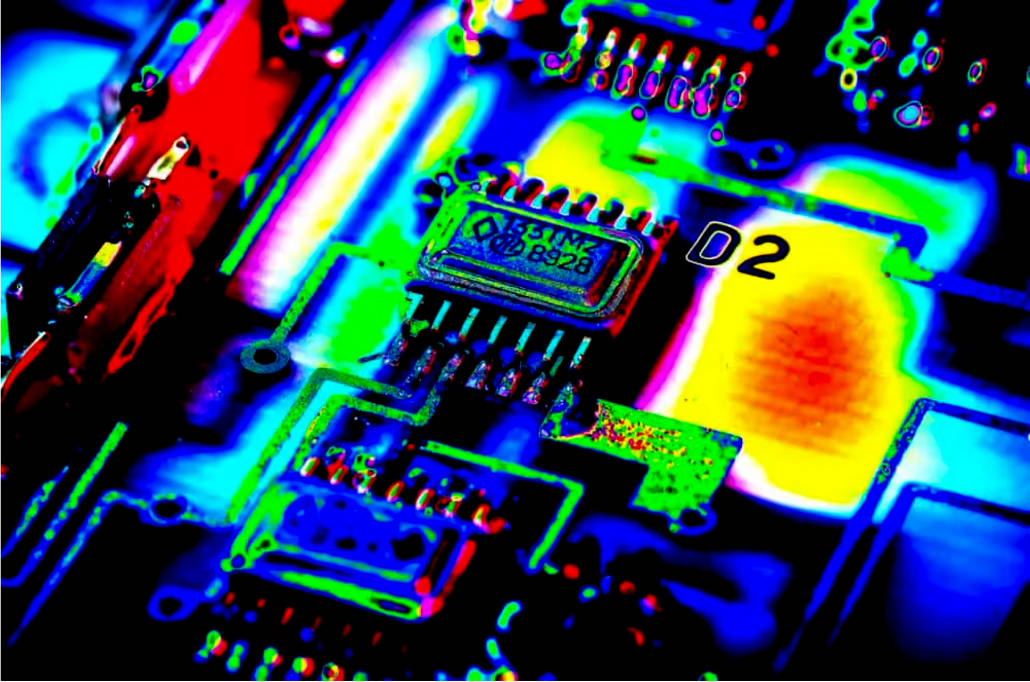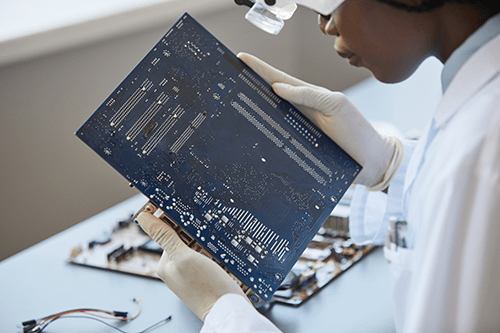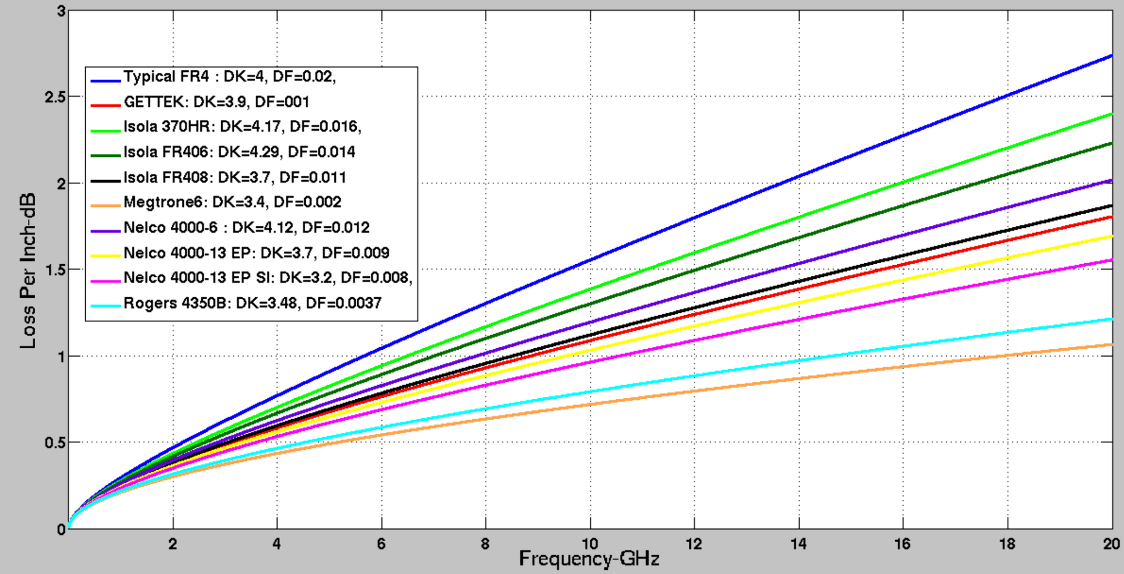Part 2: PCB Substrates: A Performance-Driven Approach to Reliability in 2025
In Part 1 , we uncovered how PCB substrate materials from cost-efficient FR-4 to high-performance ceramics directly influence signal integrity, thermal management, and overall cost. Now, we shift our focus from pricing and material types to performance-critical characteristics that drive real-world design decisions. We'll explore how electrical, thermal, and mechanical properties determine the reliability and suitability of each substrate which empowers you to make informed material choices based on your application's demands.
Performance Factors That Influence Material Choice
Performance characteristics of PCB substrates extend far beyond basic composition and cost considerations. PCB designers must carefully evaluate multiple technical factors to ensure their material selections deliver optimal reliability and functionality under real-world operating conditions.
Electrical Properties: Dielectric Constant and Loss
Image Credit: Intel - PCB Stackup Selection Guideline
The dielectric constant (Dk) of PCB substrate materials spans from 2 to 10, with most common materials clustered in the 3.5 to 5.5 range. This property directly affects signal integrity, particularly at higher frequencies where signal preservation becomes crucial. FR4 presents unique challenges because its dielectric constant varies based on thickness, copper foil roughness, resin content, and glass weave patterns, factors that complicate precision designs.
Dielectric stability across frequency ranges becomes increasingly critical as operating speeds climb. Standard FR4 shows non-uniform Dk values at high frequencies, resulting in impedance fluctuations and signal quality degradation. Specialized materials like Rogers overcome these limitations with more consistent performance characteristics, offering thermal conductivity ranging from 0.69 W/m-K to 1.7 W/m-K.
Signal loss determination relies heavily on the dissipation factor (Df), the most significant parameter when evaluating PCB materials. Higher Df values translate directly into greater signal attenuation, making low-loss laminates essential for high-speed data transmission and RF applications.
Thermal Performance: Conductivity and Heat Resistance

Image Credit: Cadence - PCB Thermal Design Guide: Tips For PCB Analysis and Performance
Thermal conductivity measures how effectively materials transfer heat between hot and cold regions. Standard FR4 delivers modest thermal conductivity of 0.3-0.5 W/mK, while ceramic substrates provide dramatically superior performance:
- Aluminum oxide (alumina): 20-30 W/m-K
- Aluminum nitride: 170-250 W/m-K
Glass transition temperature (Tg) identifies the point where substrates shift from rigid to deformable states. Standard FR4 features a Tg around 130°C, while high-performance variants reach approximately 170°C. Operating temperatures exceeding this threshold risk conductor delamination as the substrate expands and creates stress within copper structures.
Mechanical Strength and Environmental Durability
The coefficient of thermal expansion (CTE) is a critical reliability factor, especially for boards subjected to thermal cycling. Copper exhibits a CTE of approximately 17 ppm/°C, while FR4 typically shows 11 ppm/°C along the board surface and 15 ppm/°C in the perpendicular direction.
CTE values between substrate and conductors should ideally match closely to prevent stress accumulation during thermal cycles. Ceramic substrates such as aluminum nitride feature lower CTE values (4.3-5.8 ppm/°C), substantially reducing thermal stress during operation.
Harsh environment applications demand additional considerations including tensile strength, flexural strength, and moisture resistance capabilities. FR4 delivers solid mechanical performance with tensile strength of approximately 55.9 Kpsi and flexural strength around 90 Kpsi-sufficient for standard applications but potentially inadequate when exposed to extreme conditions.
How to Choose the Right PCB Material for Your Application
PCB substrate selection demands a structured decision process based on your exact technical requirements rather than defaulting to conventional or cost-minimizing options. Your material choice directly impacts circuit performance across all operating conditions.
Match Material to Application: Consumer vs Industrial vs RF
Each electronic application category requires specific material properties. Consumer electronics generally function well with standard FR-4, delivering acceptable performance while minimizing production costs. Industrial equipment operates under more demanding conditions, requiring materials with elevated glass transition temperatures and enhanced thermal resilience. Polyimide substrates thrive in these environments, featuring exceptional temperature resistance with Tg values above 260°C-significantly outperforming high-temperature FR4 variants that typically max out at 170°-180°C.
RF and high-frequency applications face unique technical hurdles. Standard FR-4 becomes technically inadequate above 7 GHz as signal losses escalate to unacceptable levels. These specialized circuits require materials with dielectric constants under 4.0 and dissipation factors below 0.005 to maintain signal fidelity. PTFE-based materials demonstrate excellent performance in applications exceeding 10 GHz, while modified FR-4 formulations can adequately serve frequency ranges up to 5-7 GHz.
When To Upgrade From FR-4 to Advanced Materials
Your design requires substrate upgrades beyond FR-4 in these specific technical scenarios:
- High-frequency circuit designs operating beyond 5 GHz
- Applications generating thermal loads requiring conductivity exceeding 0.5 W/mK
- Environments with moisture exposure necessitate enhanced resistance properties
- Designs featuring high-aspect-ratio vias (10:1+) are vulnerable to thermal cycling damage
Solar panel applications illustrate this principle perfectly. Aluminum substrates justify their cost premium through superior heat dissipation capabilities, preventing efficiency degradation under intense solar exposure.
Balancing Cost, Performance, and Manufacturability

Achieving optimal design equilibrium requires systematic prioritization. Hybrid stackup architectures, integrating premium materials only in performance-critical layers while using standard substrates elsewhere, strike an effective technical and economic balance.
Your design process should include early collaboration with fabrication partners to align material specifications with functional requirements, ensuring they meet necessary performance parameters. This methodology prevents costly over-engineering while ensuring system reliability.
Premium materials command higher initial costs but frequently deliver superior long-term performance and reliability metrics, potentially reducing total ownership costs through fewer failures and extended service intervals. Specialized substrates like Rogers become technically justified only when your application requirements specifically demand their unique electrical or thermal characteristics, not as default "premium" selections.
Key Takeaways on PCB Substrate Selection
PCB substrate selection demands precise evaluation of application-specific requirements rather than automatic selection of the lowest-cost option. Our technical assessment demonstrates how FR-4 delivers strong value for standard implementations, while premium materials like Rogers and ceramics command their higher prices specifically when thermal, electrical, or mechanical specifications exceed FR-4's performance envelope.
Advanced substrate materials prove particularly crucial for high-frequency circuit designs. Technical parameters once considered secondary-such as dielectric constant stability across frequency ranges and enhanced thermal conductivity, now become primary selection criteria as modern devices push operating frequencies and power densities to new thresholds. What initially appears as an unnecessary expense frequently results in measurable reliability improvements and extended performance throughout the product's operational lifespan.
Your material selection process should follow these technical steps:
- Define your application's critical performance requirements with precision
- Assess whether standard FR-4 meets these technical specifications
- Specify advanced substrate materials only for layers where their properties address specific design challenges
The substrate material marketplace continues its rapid technological evolution, with manufacturers developing innovative composite formulations that effectively bridge performance gaps between standard FR-4 and premium substrate options. Technical awareness of these emerging materials enables cost-optimized decisions without performance compromises. While specialized materials like Rogers and ceramics command significantly higher prices than FR-4, their strategic implementation in performance-critical sections represents calculated technical investment rather than excessive spending.
Successful electronic product development begins with technically sound substrate selection. This foundational decision influences every aspect of device performance-from signal integrity at high frequencies to thermal management during peak operational loads. Though frequently underemphasized during initial design phases, precise substrate specification yields substantial performance benefits throughout the product's functional lifetime.
FAQs
Q1. How does PCB substrate material affect cost and performance?
PCB substrate materials significantly impact both cost and performance. While FR-4 is a cost-effective option for many applications, specialized materials like Rogers or ceramics offer superior performance in high-frequency or high-heat scenarios, albeit at a higher price point. The choice depends on the specific requirements of your application.
Q2. What is the typical lifespan of a PCB?
When properly manufactured and used, a PCB can last 15-20 years in active electronic applications. However, the actual lifespan can vary depending on factors such as the quality of materials used, operating conditions, and maintenance practices.
Q3. How do I choose the right PCB substrate for my project?
Selecting the appropriate PCB substrate involves considering your application's specific needs. Evaluate factors such as operating frequency, thermal requirements, environmental conditions, and budget. For standard applications, FR-4 often suffices, while high-frequency or harsh environment applications may require specialized materials like polyimide or PTFE-based substrates.
Q4. What are the key differences between rigid and flexible PCB substrates?
Rigid PCBs, typically made from fiberglass-reinforced materials like FR-4, offer excellent mechanical strength and stable electrical performance. Flexible PCBs, using materials like polyimide or polyester, allow bending and folding, making them suitable for compact or uniquely shaped devices. Flexible substrates are generally more expensive but offer advantages in weight reduction and adaptability to complex shapes.
Q5. How does thermal conductivity vary among different PCB substrates?
Thermal conductivity varies significantly among PCB substrates. FR-4, the most common material, has a modest thermal conductivity of 0.3-0.5 W/mK. In contrast, ceramic substrates like aluminum oxide offer 20-30 W/mK, while aluminum nitride can reach 170-250 W/mK. This superior thermal performance makes ceramic substrates ideal for high-power applications where heat dissipation is critical.
